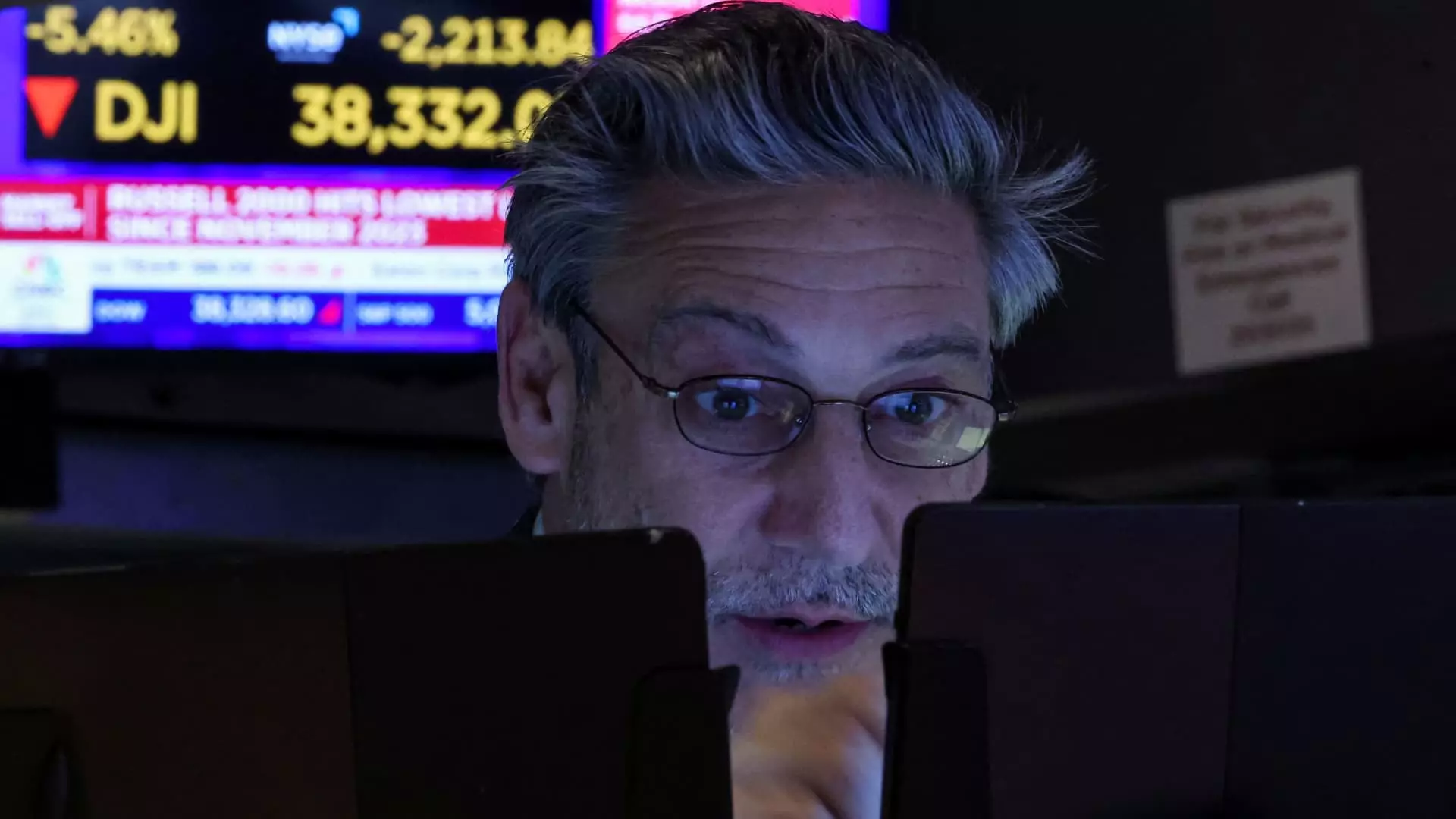In the world of finance, few events send a chill down the spine of investors more than the rapid decline of stock prices. The recent upheaval in markets serves as a stark reminder that despite advanced trading technologies and allegedly robust economic indicators, the unpredictability of the stock market remains ever-present. Trading halts, commonly referred to as circuit breakers, exist to stave off a frenzied descent into chaos. These mechanisms are akin to a firefighter’s hose; they are designed to provide some control at a critical moment. Yet, let’s be honest—how effective are they truly? Investors, particularly those with substantial stakes in the market, often feel the psychological weight of impending loss far before any actual trading halt occurs.
The immediate trigger for these halts is often an overwhelming sense of fear fueled by external factors, such as political decisions or global events. In March 2020, amidst the onset of the Covid-19 pandemic, the markets plunged, forcing exchanges to implement these halts to prevent freefall. Currently, the specter haunting the market is the rising tide of protectionist policies and tariffs initiated under Donald Trump’s administration. These changes have created an environment ripe for panic—a state where emotions dictate trading more than logic.
Understanding the Circuit Breakers
When prices fall, so too does confidence, leading to decisions driven by impulse rather than it being a calculated approach. The S&P 500 futures have specific thresholds that dictate when these all-important circuit breakers come into play. If futures drop by 7%, trading is paused—a minor inconvenience in light of the risks involved. But why is the system designed this way? The initial intention was to provide a cooling-off period, allowing investors to re-evaluate their positions before diving headfirst into oblivion.
However, in situations where panic ensues, this mechanism may do little more than delay the inevitable. During the last significant trading day prior to the recent discussion of halts, the S&P 500 shed nearly 6%. The sheer scale of such drops speaks to a rippling effect—that a circuit breaker might momentarily halt trading, but it cannot inhibit the relentless tide of anxiety overshadowing investors. The crux of anyone’s investments rests on confidence, and once that erodes, even the mightiest of indices can plummet.
The Three Levels of Trading Halts
Investors should be aware of the tiered structure underpinning circuit breakers: Level 1 at a 7% decline, Level 2 at 13%, and Level 3 at a catastrophic 20%. Each level escalates the response to market declines. At first glance, this framework seems robust. After all, halting trading allows a moment for rational thought in a world that usually resembles a battlefield—but in reality, every single percentage drop represents lost capital and potential ruin for the average investor.
During a market freefall, asking whether traders will emerge willing to buy at the “limit down” price feels almost naive. For every institutional investor poised to act, countless retail investors will retreat further into the shadows, clinging to their dwindling resources. The harsh reality is that while the toppest tiers of investment management might grasp the intricacies of these levels, the average investor often simply watches in horror as their financial dreams dissipate.
The Emotional Turmoil of Market Collapse
The emotional and psychological ramifications for investors during these market meltdowns cannot be overstated. Studies show that the anxiety attached to financial loss elicits a more profound response than the pleasure derived from gains. The S&P 500 now stands 17% below its previous high—an alarming statistic that feels all the more chilling when paired with the recent data indicating a bear market for indices such as the Nasdaq. In this fraught climate, circuit breakers may only serve as momentary pauses in a relentless barrage of negative sentiment.
Moreover, as the media amplifies stories of dramatic losses and bear markets, the masses become increasingly desensitized to their investment strategies. The psychological warfare of market participation becomes evident: with every downturn, confidence erodes, and with every circuit breaker, the world of investing becomes less about sound decisions and more about emotional survival.
Navigating these turbulent waters requires not just an awareness of market mechanics but a grounding in one’s risk tolerance and emotional resilience. Ultimately, while circuit breakers are a necessary evil in managing volatility, they can’t bring back lost investments or restore lost confidence. In the end, the lesson is clear: investing is a high-stakes game where the only certainty is uncertainty itself.

